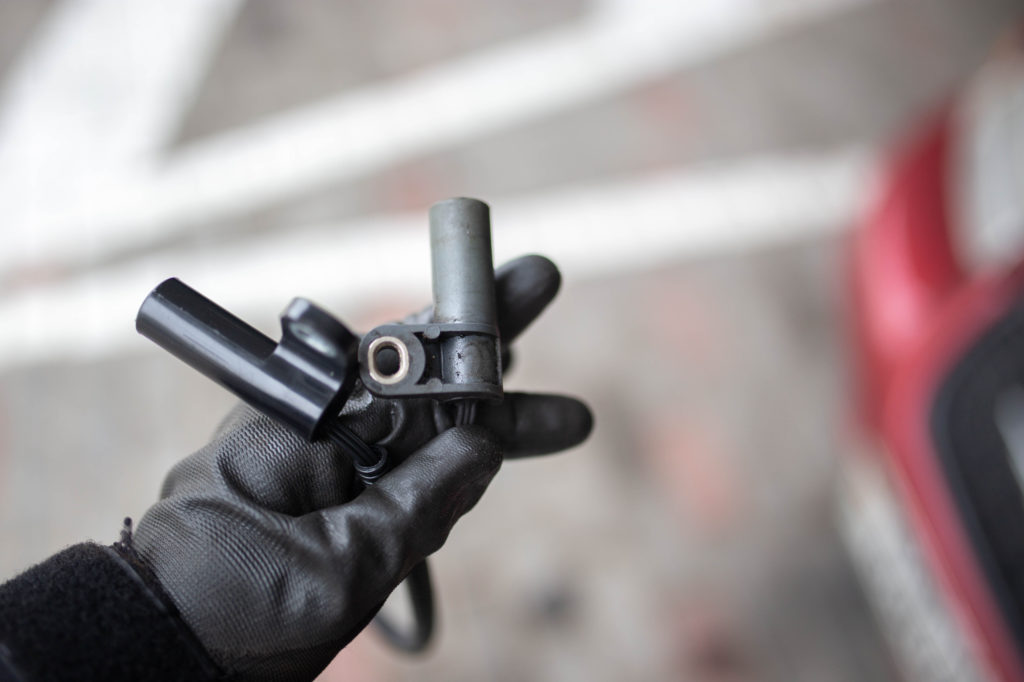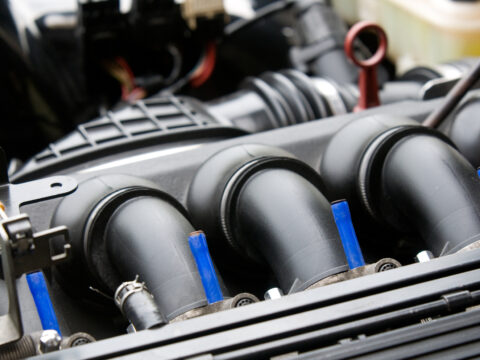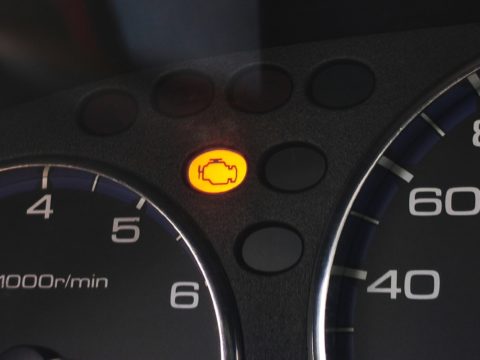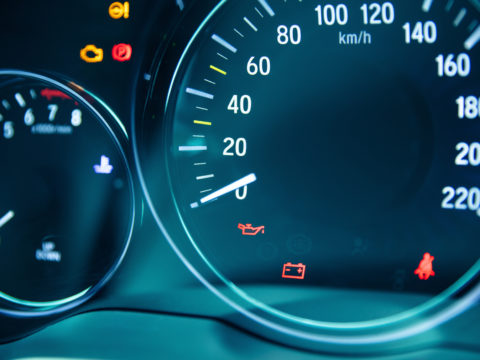Does your car hesitate, falter, or stall when accelerating? Do you sometimes have trouble starting the engine? Maybe even the check engine light is on? It sounds serious, but It may not be.
It could be as simple as a faulty crankshaft position sensor, a reasonably simple and inexpensive repair.

Contents
What Does a Crank Sensor Do in a Car?
A crankshaft position sensor is an electronic device that receives information from the reluctor wheel, a round piece attached to one end of the crankshaft.
The reluctor wheel has teeth, with one gapped area. The sensor detects the gap in the teeth and uses it to determine the speed and position of the crankshaft.
The information received by the sensor signals the engine control unit (ECU) the following:
- how fast the crankshaft is turning,
- the location of the pistons, and
- when and how much fuel to release to the spark plugs.
The sensor plays a critical role in the efficient operation of the vehicle.
Crankshaft Position Sensor Location
The crankshaft position sensor sits near the front or back of the crankshaft. The position depends on the make and model of the vehicle. It is mounted next to the reluctor wheel on the end of the crankshaft.
What are the Symptoms of a Failing Crankshaft Position Sensor?
There are five primary symptoms of a faulty crankshaft position sensor.
Symptom 1
Check Engine Light On: The check engine light on the dash usually flashes when you start the engine but then goes off. If the crankshaft position sensor is faulty, the check engine light may stay on or flash continuously.
If this happens, the computer trouble codes can be scanned to determine the cause of the engine light illumination.
Symptom 2
Trouble Starting: One typical sign of a faulty crankshaft position sensor is trouble starting.
If the sensor is not communicating with the reluctor wheel, the engine can’t determine when to inject fuel to the spark plugs to fire the engine and make it turn. This will result in the engine not starting.
Symptom 3
Rough Idle and Unsteady Acceleration: A faulty crankshaft position sensor will cause your engine to idle in an irregular, rough pattern.
It will shake your car when idling and accelerating instead of the ordinarily smooth engine feel.
When you step on the gas, your vehicle will be slow to respond and seem to vibrate or chug as you accelerate.
That is because the position of the pistons, the current supplied to the spark plugs, and the fuel injection provided to the ignition are all based on the proper communication received from the crankshaft position sensor to the ECU.
Symptom 4
Engine Misfire & Stalling: If the crankshaft position sensor sends incorrect information to the ECU, the amount and timing of the fuel delivery to the combustion chamber will be incorrect, causing the engine to sputter and shake as it misfires, and can result in stalling of the vehicle.
Symptom 5
Reduced Gas Mileage: The malfunctioning of the crankshaft position sensor results in misinformation or no information relayed to the ECU.
This malfunction results in improper engine rotation, inefficient fuel use, and misfiring of the sparkplugs. As a result, the vehicle’s gas mileage will be impaired.

What Causes Crankshaft Sensor To Go Bad?
Let’s take a look at five common causes of a bad crankshaft sensor:
Cause 1
Metal Debris: The engine takes a lot of abuse during its life, with heat and vibration causing damage and wear to various components.
This can cause little bits of metal to break loose and fly around, settling where they might cause damage.
The magnetic component of the crankshaft position sensor can attract these tiny bits of metal and artificially close the gap on the reluctor wheel that indicates and relays the crankshaft’s position to the ECU.
Cause 2
Overheating: It’s normal for the engine to generate heat, but sometimes engines that run inefficiently due to mechanical problems or wear generates excess heat.
This excess heat leads to warping and breaking down of components like the sensors, causing their failure.
Cause 3
Improper Installation: Improper installation of the crankshaft position sensor can result in loose wiring or unwanted movement that can cause the sensor to function improperly.
Cause 4
Vibration: Engine problems can cause excessive vibrations that can lead to the improper function of the crankshaft position sensor.
Vibrations can cause the delicate inner workings of the sensor to become loose or broken.
Cause 5
Faulty Circuit: Anything that wears or jars the crankshaft position sensor can interrupt the delicate circuitry within the sensor, causing it to malfunction.
Can You Reset A Crankshaft Position Sensor?
After a new crankshaft position sensor has been properly installed, it should be reset so it will be in sync with the ECU and communicate properly.
This gets done by the mechanic and usually involves the use of a computer scanner.
If you use a scanner, the process takes about ten minutes. The reset can also be completed without a scanner but takes about thirty minutes and involves driving the car at various speeds to signal the proper reset.
How To Test A Crank Sensor
Symptoms of a faulty crankshaft position sensor can mimic other engine problems, so testing the sensor before replacing it is essential. This test can be done by using a diagnostic scan tool to read the engine trouble codes.
Codes generated between PO335 and PO338 indicate a faulty crank sensor. Other ways to test the sensor involve using a multimeter to test the voltage generated from the sensor.
How Long Does A Crankshaft Sensor Last?
While the crankshaft position sensor may last the life of your car, it is not uncommon for it to fail as your engine ages and wears.
Once your vehicle has over one hundred thousand miles on it, the chances increase that the crankshaft sensor will go bad.
What Happens If You Drive With A Bad Crankshaft Position Sensor?
When you continue to drive your car with a bad crankshaft position sensor, it can have detrimental effects on your car’s engine.
The misinformation provided to the ECU can cause a chain reaction of events that can further damage the engine resulting in more expensive repairs.
Crankshaft Position Sensor Replacement Cost
The cost of replacing the crankshaft position sensor is relatively low as engine repairs go, so it is essential to attend to it immediately when the problem arises, preventing more serious engine damage.
The cost of replacing the sensor at a garage usually runs between $150 to $300, depending on the make and model of your vehicle.














